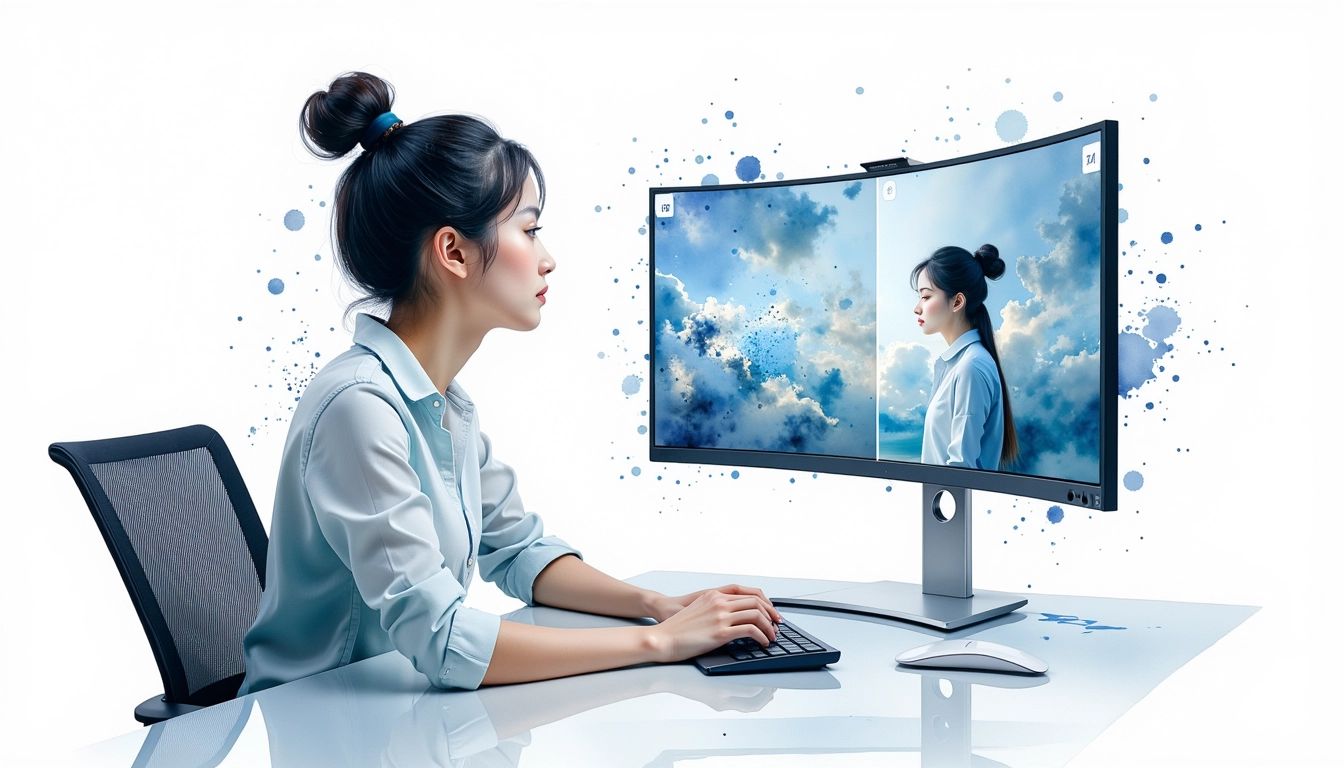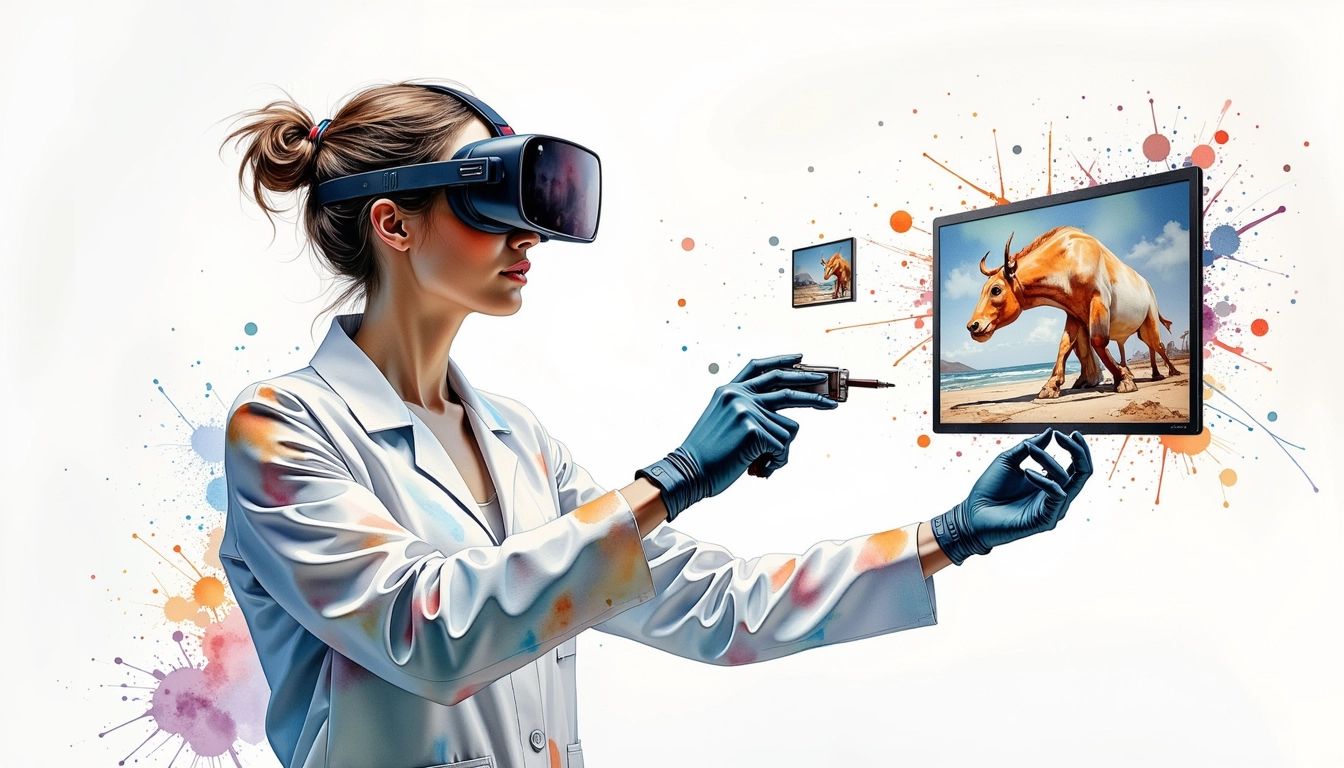Understanding AI Video Enhancement

Remember those old home videos? Grainy, shaky, and definitely not in 4K. AI video enhancement is changing how we experience these memories, revitalizing old footage and making even recent videos look incredible. These tools are readily available, allowing us to increase resolution, sharpen details, and even colorize black and white film with surprising accuracy. But how does AI actually achieve this? It's not magic, but rather clever algorithms at work.
The Power Behind the Pixels: How AI Works
AI video enhancement relies on deep learning models. Trained on huge video datasets, these models learn to recognize patterns and textures. This allows the AI to "learn" the characteristics of a high-quality video and apply this knowledge to improve lower-quality footage. For instance, with a blurry video, the AI can examine surrounding pixels and fill in missing details to create a sharper picture. It's like a digital artist meticulously restoring each frame. The focus isn't just on enlarging videos, it's on making them genuinely better.
Imagine transforming a VHS recording into something close to 4K quality. That's the promise of AI video upscaling. New tools can analyze each frame, adding detail and clarity for a stunning high-resolution result. This is especially helpful for historical footage, giving new life to captured moments from the past.
From Grainy to Great: Real-World Examples
The effect of AI video enhancement is already visible across different fields. Historians are restoring and enhancing archival footage, providing us with an unprecedentedly clear view of past events. Content creators are using these tools to produce higher-quality videos for social media, online courses, and even movies. Think of a YouTuber upscaling historical footage to 4K. It's more visually appealing to modern audiences and reveals details previously lost in the lower resolution. Home users can also benefit, transforming their personal memories from blurry recordings into sharp, vibrant videos.
However, using AI in video enhancement has its complexities. Discussions continue about the possibility of AI adding or changing details, leading to ethical questions about historical accuracy. While AI can improve quality, it's important to remember the original material's value and be mindful of potential inaccuracies. As the technology advances, careful consideration of the line between enhancement and alteration is necessary. Still, AI's ability to improve video quality is clear, opening exciting possibilities for visual storytelling.
How AI Upscaling Works
We’ve discussed the impressive results of AI video enhancement, but let’s examine how AI upscales video quality. Imagine enlarging a small, pixelated image. Simply stretching it makes it bigger, but also blurrier. AI upscaling avoids this by intelligently adding detail instead of stretching pixels.
The Mechanics of AI Upscaling
Deep learning models, often using convolutional neural networks (CNNs), are central to AI upscaling. These networks are trained with vast datasets of high- and low-resolution video pairs. This teaches the AI the relationship between them, building an understanding of how detail is lost when resolution is reduced. The AI doesn't guess; it predicts the missing information based on surrounding pixels and learned patterns.
When upscaling, the AI uses this knowledge to fill in the gaps. Instead of duplicating pixels, it generates new ones for a sharper image. It’s like the AI “visualizing” the higher-resolution version based on its training. It's similar to a digital artist painstakingly reconstructing each frame to enhance detail.
From Prediction to Perfection: Refining the Process
The process is more than just pixel prediction. Many AI upscaling algorithms also reduce noise and remove artifacts. Compression artifacts, those blocky areas in highly compressed videos, are common with low-resolution footage. AI can identify and smooth these imperfections for a cleaner result. Videos aren’t just upscaled; they're also refined, significantly improving visual quality. Imagine turning grainy home movies into something resembling modern high-definition. That's AI's potential, preserving and enhancing memories and historical footage for future generations.
Popular AI Enhancement Tools

We’ve looked at how AI upscaling works, but what tools are available? The market offers various options, from free online tools to comprehensive software packages. There’s likely an AI solution for your needs and budget. Let's explore some popular choices.
Free and Accessible Online Tools
For quick enhancements and experimentation, several online tools offer AI upscaling and enhancement, often for free. These are great for exploring AI without a significant investment. Some popular options are:
- CapCut: CapCut’s user-friendly interface offers AI upscaling, making it easy to improve video resolution in a few clicks. It's particularly helpful for social media content creators needing fast video polishing.
- Vidscale.Pro: This online service specializes in AI upscaling, enhancing resolution while preserving detail. Its batch processing is efficient for handling multiple videos.
Software Solutions for Advanced Control
For more control and professional results, dedicated software offers a wider range of features and customization. These are ideal for video editors, filmmakers, and anyone seeking top-quality enhancements:
- AVCLabs Video Enhancer AI: This software uses deep learning to upscale videos to impressive resolutions, even up to 8K. It also includes noise reduction and color correction, providing a complete solution for restoring and improving videos. Imagine giving old, blurry home movies new life – that's what’s possible. The AI can significantly boost quality, potentially making decades-old footage look remarkably modern.
- Topaz Video Enhance AI: Known for its high-quality results, particularly with older or low-resolution footage, this popular software focuses on upscaling and enhancing footage with detailed control over various settings.
The Evolving Field of AI Video Enhancement
AI video enhancement is constantly evolving. As AI algorithms improve, we can expect even more impressive results. AI's capacity to improve video quality offers exciting possibilities for restoring historical footage, creating engaging content, and preserving memories in stunning clarity. Learn more in our article about Revolutionizing Video Editing: How AI is Transforming the Landscape. The right tool depends on your needs, but the variety of options makes it easier than ever to use AI to transform your videos. From basic upscaling to advanced restoration, these tools provide incredible ways to enhance your video content.
Real-World Applications

We've discussed tools and technology, but where is AI making a real difference in video quality? The answer: almost everywhere. From restoring film history to improving your latest YouTube upload, AI's impact is increasingly evident. Let's explore some fascinating uses.
Preserving the Past: Historical Footage Restoration
Imagine historical events with a clarity unimaginable a few years ago. AI is making this possible. Archival footage, often grainy and damaged, is being revitalized through AI. AI upscales resolution, removes scratches, reduces noise, and stabilizes shaky footage, bringing history to life with vivid detail. This is priceless for documentaries, educational resources, and preserving cultural heritage. Think of it as upgrading our visual time machine.
Content Creation Gets a Boost: From YouTube to Hollywood
Content creators, from YouTubers to film studios, are using AI to improve quality. Online platforms like CapCut provide accessible AI upscaling, allowing anyone to enhance videos for social media or online courses. Professionally, AI is used in post-production to create visually stunning content, enhance special effects, or restore older films. This allows content to reach its visual potential, regardless of initial filming conditions or budget.
Everyday Memories, Extraordinary Quality: Home Video Enhancement
AI's ability to improve video quality benefits everyone. Precious home videos can be transformed from blurry memories into clear records. AI tools upscale old footage, reduce noise, and even colorize black and white film, giving new life to family histories. This puts powerful tools in the hands of everyday users, allowing them to preserve and share their memories like never before.
Ethical Considerations: Balancing Enhancement and Authenticity
While AI's potential is vast, it's important to acknowledge the debate surrounding its use, particularly with historical footage. Concerns exist about AI adding or altering details, raising questions of authenticity. The line between enhancement and manipulation can be blurry, and responsible use is critical. However, when used ethically and transparently, AI offers incredible opportunities to preserve, share, and experience visual stories in powerful new ways.
Future of AI Video Enhancement

We’ve seen how AI improves video quality today, but what about the future? The pace of innovation is rapid, and possibilities seem endless. As AI algorithms improve, we can expect even more dramatic improvements.
Beyond Upscaling: The Next Frontier
While upscaling is key, the future holds advancements beyond just increasing resolution. Imagine AI automatically reframing footage, removing unwanted objects, or generating new content based on existing footage. These are just a few possibilities. As AI's understanding of video deepens, it will unlock new ways to manipulate and improve footage.
Real-Time Enhancement: The Power of Instant Results
Current AI tools often require processing time, but the future points towards real-time capabilities. Imagine live streaming with AI automatically correcting lighting, stabilizing footage, and boosting resolution instantly. This could revolutionize live broadcasts, video conferencing, and even gaming, improving the viewer experience.
Personalized Video Experiences: Tailored to You
AI could create personalized video experiences. Imagine AI learning your preferences and adjusting video settings to optimize your enjoyment, perhaps by changing contrast, sharpening details, or adjusting color saturation. This could transform how we watch videos, making it more immersive.
Democratization of Quality: Accessible to All
The most exciting prospect may be democratization. As AI tools become more affordable, the power to improve video quality will be available to everyone, from amateur filmmakers to everyday users. This means anyone can create stunning, high-quality videos, regardless of equipment or editing skills. With AI constantly learning, the future of video enhancement is full of potential, promising a new era of visual storytelling.
Tips for Best Results
Ready to explore AI video enhancement? Great! Before you begin, here are a few tips to ensure you get the best results. AI can do wonders, but a bit of know-how maximizes its potential.
Choose the Right Tool
Just like using the right tool for any job, you need to select the right AI video enhancement tool for your needs. For a quick upscale for social media, a free online tool like CapCut might suffice. For archival footage or fine-tuned control for a professional project, dedicated software like Topaz Video Enhance AI or AVCLabs Video Enhancer AI might be a better investment. Consider the level of enhancement needed, your budget, and your technical skills.
Start with the Best Source Material
While AI is powerful, it can’t perform miracles. Starting with the highest quality source video gives the best results. If digitizing analog footage, ensure a clean digitization process using high-quality equipment and minimizing noise and artifacts.
Experiment and Refine
Don't expect perfection immediately. AI video enhancement often involves experimentation. Try different settings, upscaling levels, noise reduction, or sharpening options. Preview your results frequently. It's like fine-tuning a musical instrument – small adjustments make a big difference. The goal is to improve quality and create the best viewing experience.
Want to streamline video creation and experience AI firsthand? Aeon, our video creation platform, empowers publishers to transform text, video, or audio into engaging video formats effortlessly. Explore Aeon today and unlock the potential of AI-driven video creation.